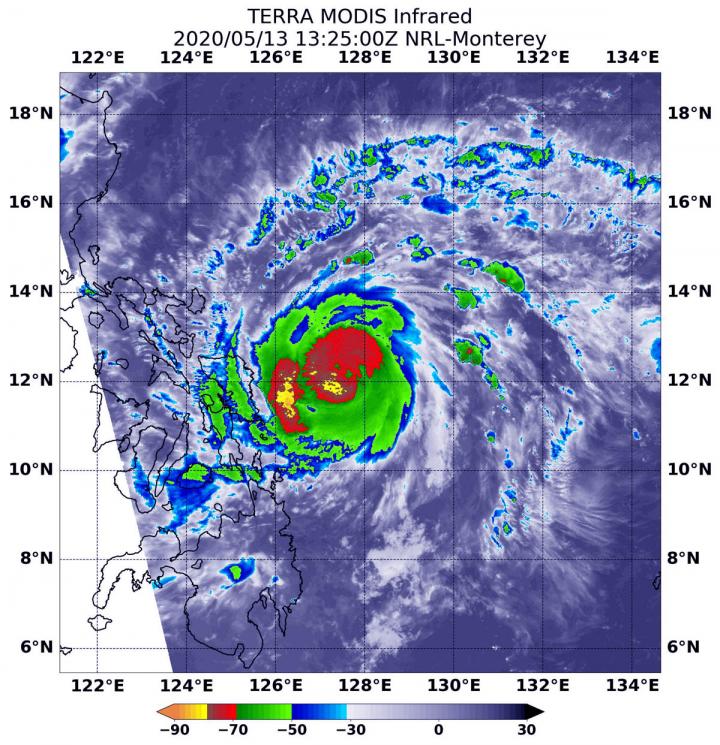
Credit: Credit: NASA/NRL
NASA’s Terra satellite revealed powerful storms in Vongfong as it ramped up from a tropical storm to a typhoon. Vongfong is known locally in the Philippines as Typhoon Ambo.
NASA’s Terra satellite used infrared light to analyze the strength of storms in Vongfong. Infrared data provides temperature information, and the strongest thunderstorms that reach high into the atmosphere have the coldest cloud top temperatures.
On May 13 at 9:25 a.m. EDT (1325 UTC), the Moderate Resolution Imaging Spectroradiometer or MODIS instrument aboard NASA’s Terra satellite gathered temperature information about Typhoon Vongfong’s cloud tops. MODIS found two large areas of powerful thunderstorms north and west of the center of circulation where temperatures were as cold as or colder than minus 70 degrees Fahrenheit (minus 56.6 Celsius). Cloud top temperatures that cold indicate strong storms with the potential to generate heavy rainfall.
Warnings in the Philippines include Tropical cyclone wind signal number #1 for the Visayas region: northern parts of Samar and northern parts of eastern Samar; and for the Luzon region: Sorsogon, Ticao Island, Catanduanes, southern parts of Albay.
At 5 a.m. EDT (0900 UTC) on May 13, 2020, the Joint Typhoon Warning Center noted that Vongfong (Ambo) was located near latitude 12.0 degrees north and longitude 128.5 degrees east, about 465 nautical miles east-southeast of Manila, Philippines. Vongfong was moving to the west-northwest and had maximum sustained winds 70 knots (80 mph/130 kph).
Vongfong is strengthening. The storm is expected to peak at 100 knots (115 mph/185 kph) as it passes east of the Visayas islands, and then begin to weaken.
Typhoons and hurricanes are the most powerful weather events on Earth. NASA’s expertise in space and scientific exploration contributes to essential services provided to the American people by other federal agencies, such as hurricane weather forecasting.
###
Media Contact
Rob Gutro
[email protected]
Original Source
https:/




